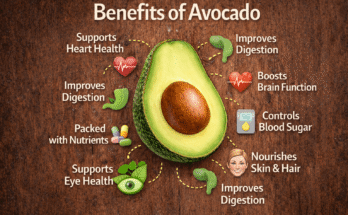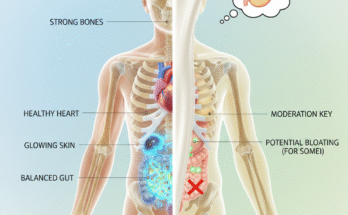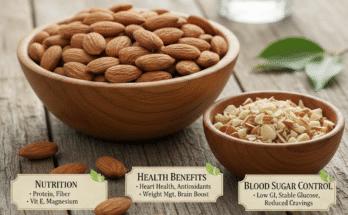What is Cardiovascular disease
Cardiovascular disease (CVD) is a class of diseases that involve the heart or we can say that blood vessels. Cardiovascular disease includes coronary artery diseases (CAD) such as angina and myocardial infarction it is also know as heart attack .Other CVDs include stroke, heart failure, hypertensive heart disease, rheumatic heart disease, cardiomyopathy, heart arrhythmia, congenital heart disease, valvular heart disease, carditis, aortic aneurysms, peripheral artery disease, thromboembolic disease, and venous thrombosis.
Most Dangerous Types of Cardiovascular disease
There are four main types of CVD:
- coronary heart disease
- stroke
- peripheral arterial disease
- aortic disease
- Lets see types of cardiovascular disease individually .
Coronary heart disease
Coronary heart disease (CHD) occurs when your heart muscle’s blood supply is blocked or interrupted by a build-up of fatty substances (atheroma) in the coronary arteries.
The coronary arteries are the major blood vessels that supply your heart with blood.
If your coronary arteries become narrow due to a build-up of atheroma, the blood supply to your heart muscle will be restricted. This can cause angina (chest pains).
If a coronary artery becomes completely blocked, it can cause a heart attack. This is a medical emergency.
Stroke
A stroke is a serious medical condition that occurs when the blood supply to the brain is disturbed.
Like all organs, your brain needs a constant supply of oxygen and nutrients to function properly. This is provided by the blood, so if your blood flow is restricted or stopped, brain cells will begin to die. This can lead to brain damage and possibly death.
Therefore, a stroke is a medical emergency and prompt treatment is essential. The sooner a person receives treatment, the less damage is likely to occur.
The main stroke symptoms can be remembered with the word FAST which stands for:
Face — the face may have drooped on one side, the person may not be able to smile or their mouth or eye may have drooped
Arms — the person with suspected stroke may not be able to lift their arm and keep it raised due to weakness or numbness
Speech — the person’s speech may be slurred or garbled, or they may not be able to talk at all despite appearing to be awake
Time — it is time to dial 999 immediately if you see any of these signs or symptoms
Peripheral arterial disease
Peripheral artery disease (also called peripheral arterial disease) is a common circulatory problem in which narrowed arteries reduce blood flow to your limbs.
When you develop peripheral artery disease (PAD), your extremities — usually your legs — don’t receive enough blood flow to keep up with demand. This causes symptoms, most notably leg pain when walking (claudication).
Peripheral artery disease is also likely to be a sign of a more widespread accumulation of fatty deposits in your arteries (atherosclerosis). This condition may be reducing blood flow to your heart and brain, as well as your legs.
You often can successfully treat peripheral artery disease by quitting tobacco, exercising and eating a healthy diet.
Aortic disease
The aorta is the largest blood vessel in the body. It carries blood from your heart to the rest of your body.
Early diagnosis is critical for survival and management of diseases of the aorta. Undiagnosed aortic disease increases the likelihood of life-threatening conditions, including aortic dissection and rupture.
The Aortic Program at the Heart Institute is patient-centric, with its team of specialists providing appropriate diagnostic testing and treatments for the Aortic.
Cardiovascular Disease Prevention
According to statistic up to 90% of cardiovascular disease may be preventable if established risk factors are avoided. Currently practiced measures to prevent cardiovascular disease include:
Tobacco
Tobacco cessation and avoidance of second-hand smoke. Smoking cessation reduces risk by about 35%.
Low Fat
A low-fat, low-sugar, high-fiber diet including whole grains and fruit and vegetables.Dietary interventions are effective in reducing cardiovascular risk factors over a year, but the longer term effects of such interventions and their impact on cardiovascular disease events is uncertain.
Exercise
At least 150 minutes (2 hours and 30 minutes) of moderate exercise per week.Exercise-based cardiac rehabilitation reduces risk of subsequent cardiovascular events by 26%,(89)(needs update) but there have been few high quality studies of the benefits of exercise training in people with increased cardiovascular risk but no history of cardiovascular disease.
Limit alcohol
Limit alcohol consumption to the recommended daily limits;People who moderately consume alcoholic drinks have a 25–30% lower risk of cardiovascular disease. However, people who are genetically predisposed to consume less alcohol have lower rates of cardiovascular disease suggesting that alcohol itself may not be protective. Excessive alcohol intake increases the risk of cardiovascular disease and consumption of alcohol is associated with increased risk of a cardiovascular event in the day following consumption.
Blood Pressure
Lower blood pressure, if elevated. A 10 mmHg reduction in blood pressure reduces risk by about 20%.
Cholesterol
Decrease non-HDL cholesterol.Statin treatment reduces cardiovascular mortality by about 31%.
Body Fat
Decrease body fat if overweight or obese.The effect of weight loss is often difficult to distinguish from dietary change, and evidence on weight reducing diets is limited.In observational studies of people with severe obesity, weight loss following bariatric surgery is associated with a 46% reduction in cardiovascular risk.
Psychosocial Stress
Decrease psychosocial stress. This measure may be complicated by imprecise definitions of what constitute psychosocial interventions. Mental stress–induced myocardial ischemia is associated with an increased risk of heart problems in those with previous heart disease. Severe emotional and physical stress leads to a form of heart dysfunction known as Takotsubo syndrome in some people. Stress, however, plays a relatively minor role in hypertension. Specific relaxation therapies are of unclear benefit.
Do not take Cardiovascular disease light. If you feel any symptoms Cardiovascular disease try to prevent above mention points. If still not co

ntrol Cardiovascular I highly recommend you to consult with Cardiovascular Specialist or cardiologist near you. I you are living in London, UK, I suggest you Dr Boon Lim — Best Cardiologist London. He is best electrophysiologist in london.


